Abstract
No method is in general usage and of demonstrated effectiveness in eliminating the self-stimulatory behaviors of retardates and autistics. An Overcorrection rationale was used to develop such a method. The Overcorrection procedures consisted of a period of practice in the correct mode of the behavior contingent upon self-stimulatory behavior. The procedures were applied in a behavioral day-care program to three retarded children and one autistic child who exhibited object-mouthing, hand-mouthing, head-weaving and hand-clapping. For some behaviors, comparisons were made between the Overcorrection procedure and several alternative procedures, such as physical punishment by a slap, reinforcement for nonself-stimulatory behavior, a distasteful solution painted on the hand of a hand-mouther, and free reinforcement. The Overcorrection procedures eliminated the self-stimulatory behaviors of all four children in tutorial sessions and during the entire school day and were more effective than the alternative procedures in eliminating self-stimulation. The Overcorrection procedures appear to be rapid, enduring, and effective methods of eliminating self-stimulatory behavior.
Full text
PDF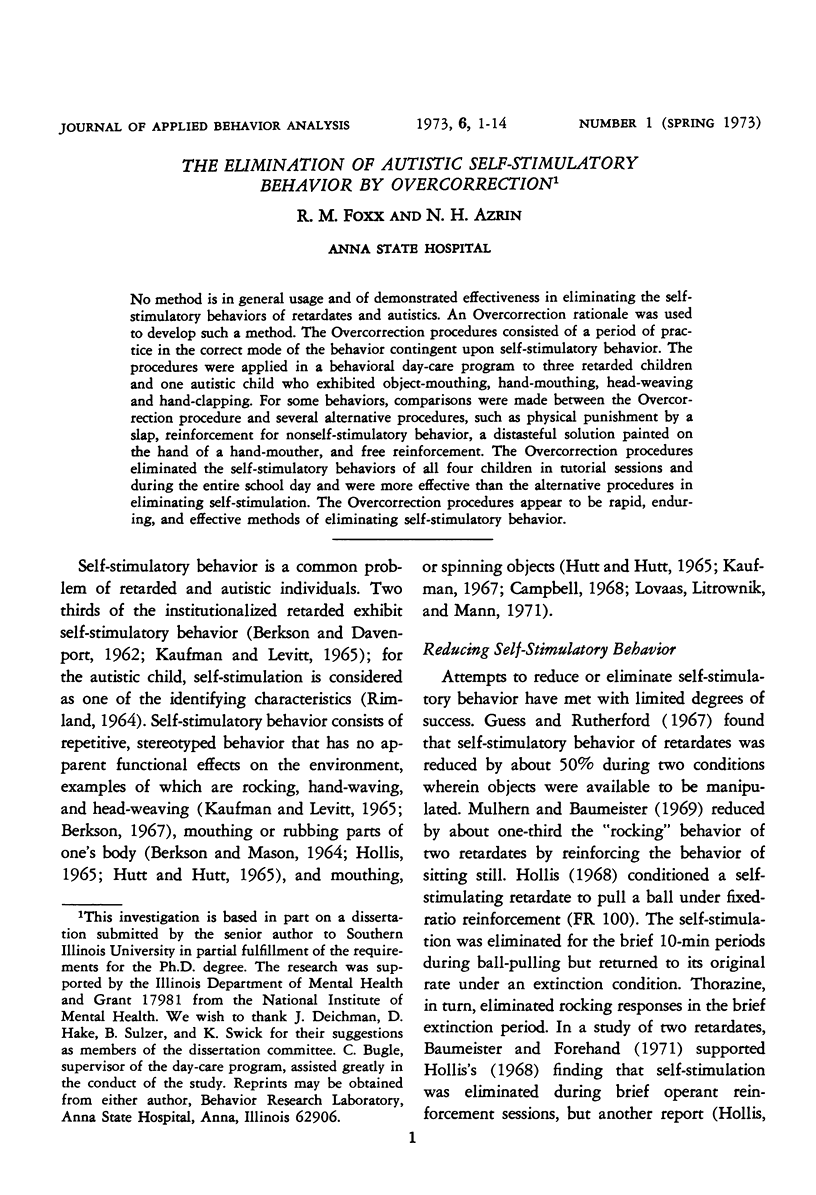
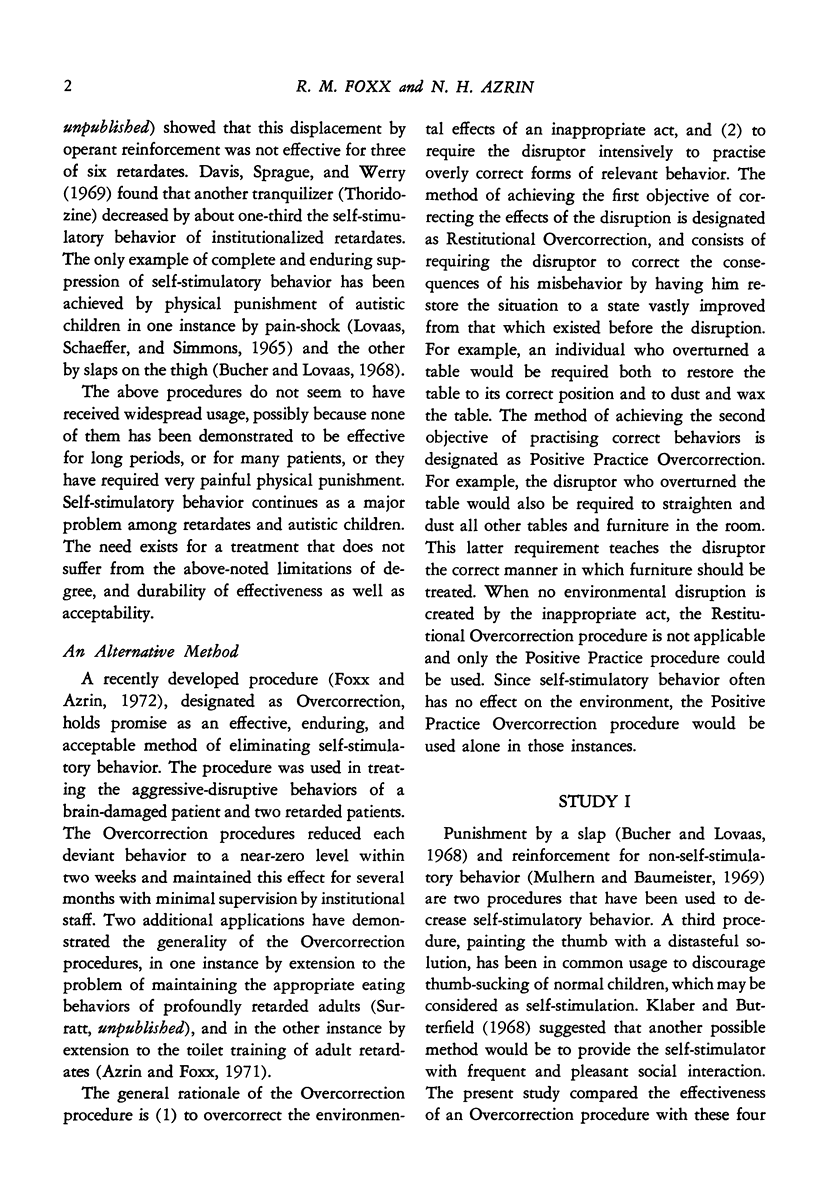
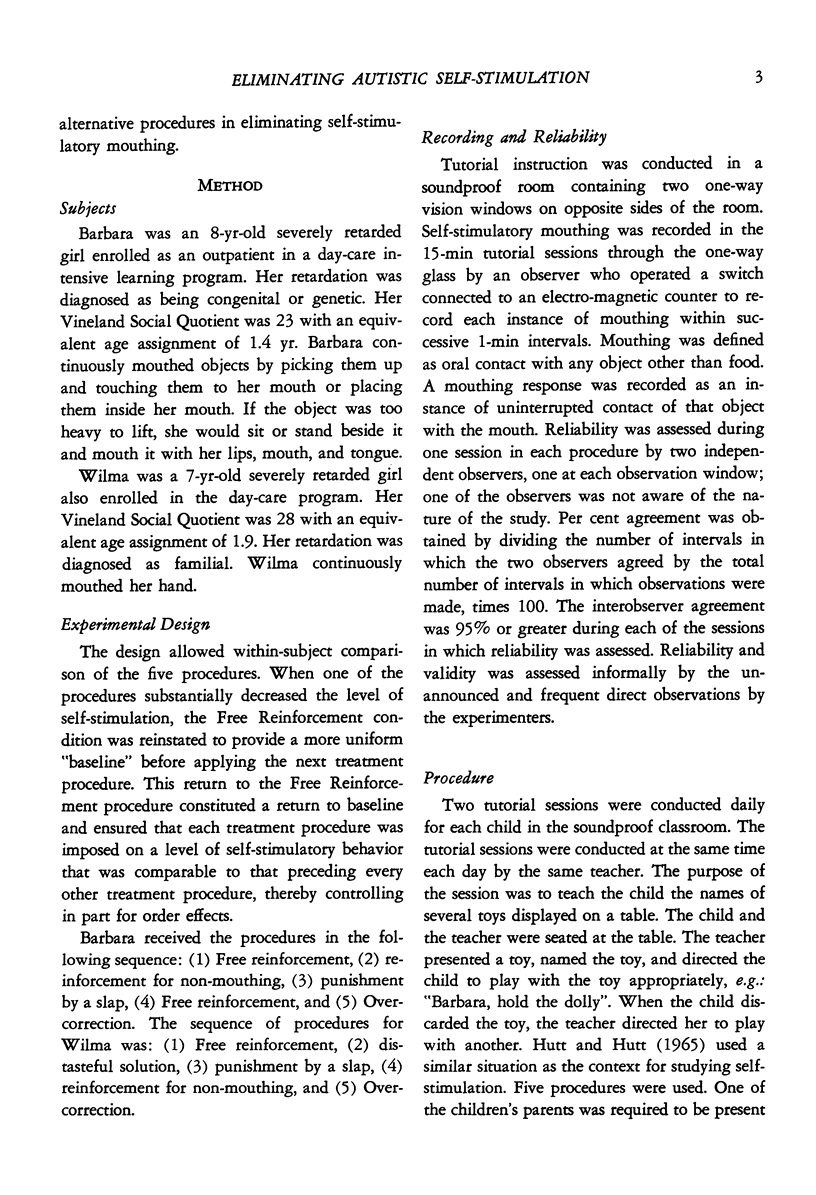

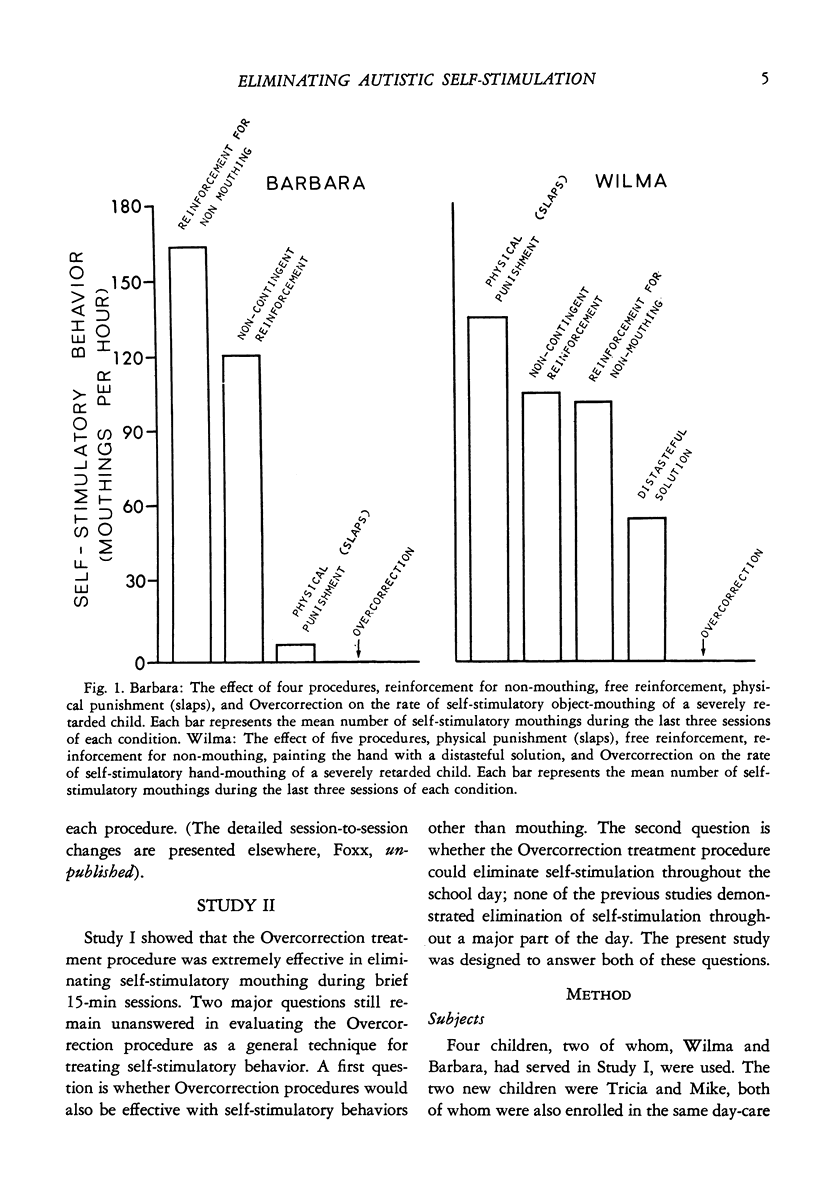


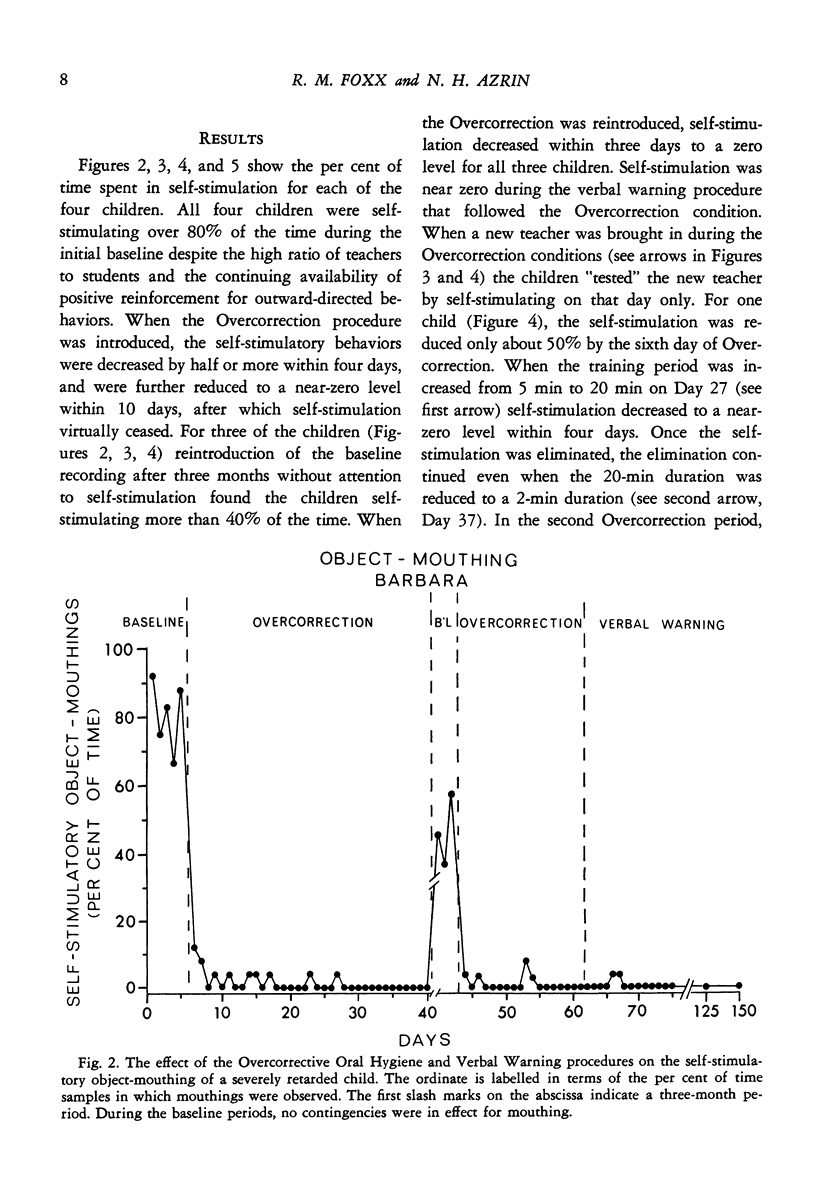


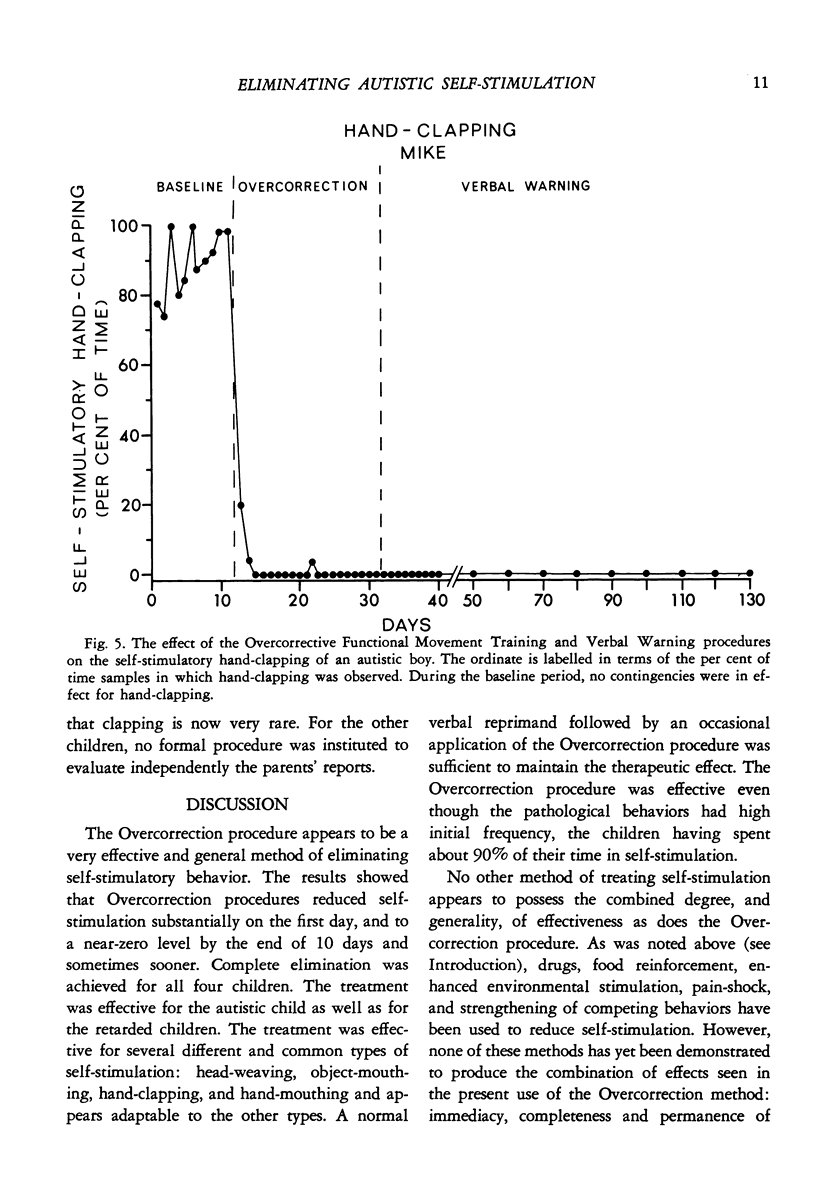
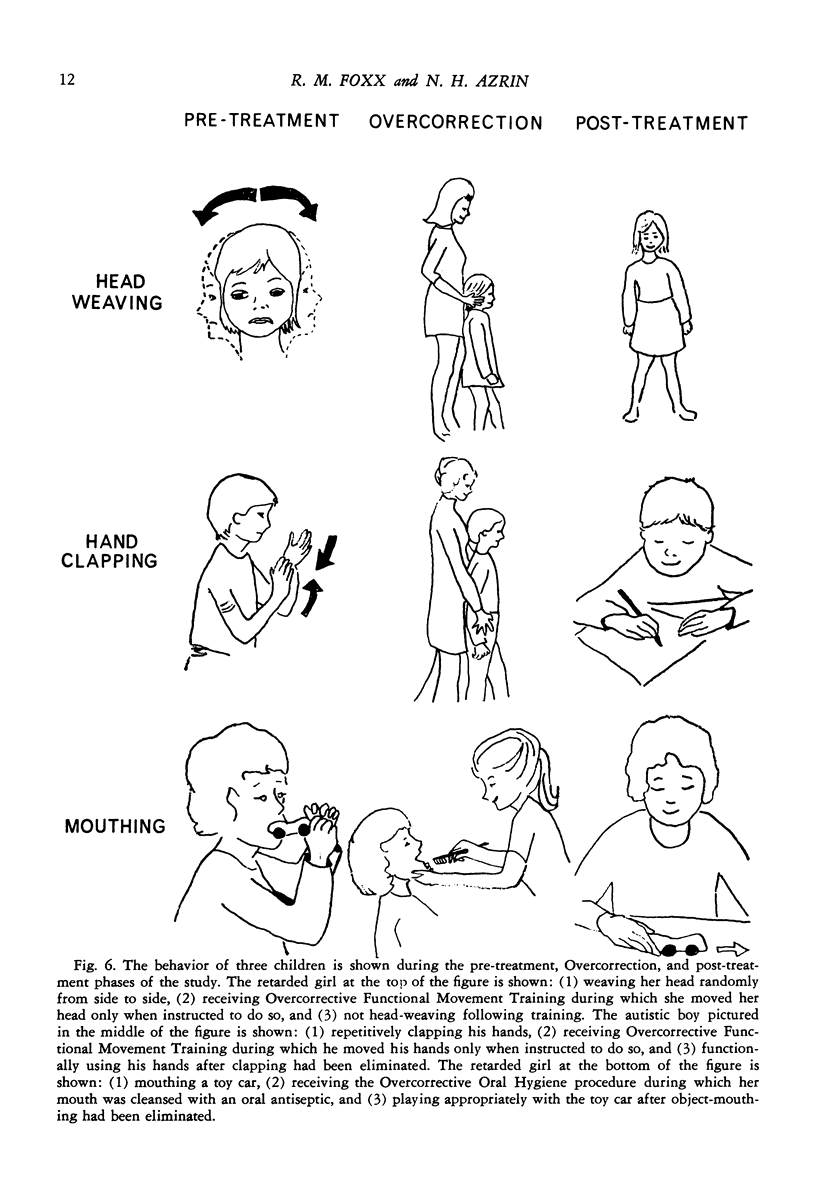

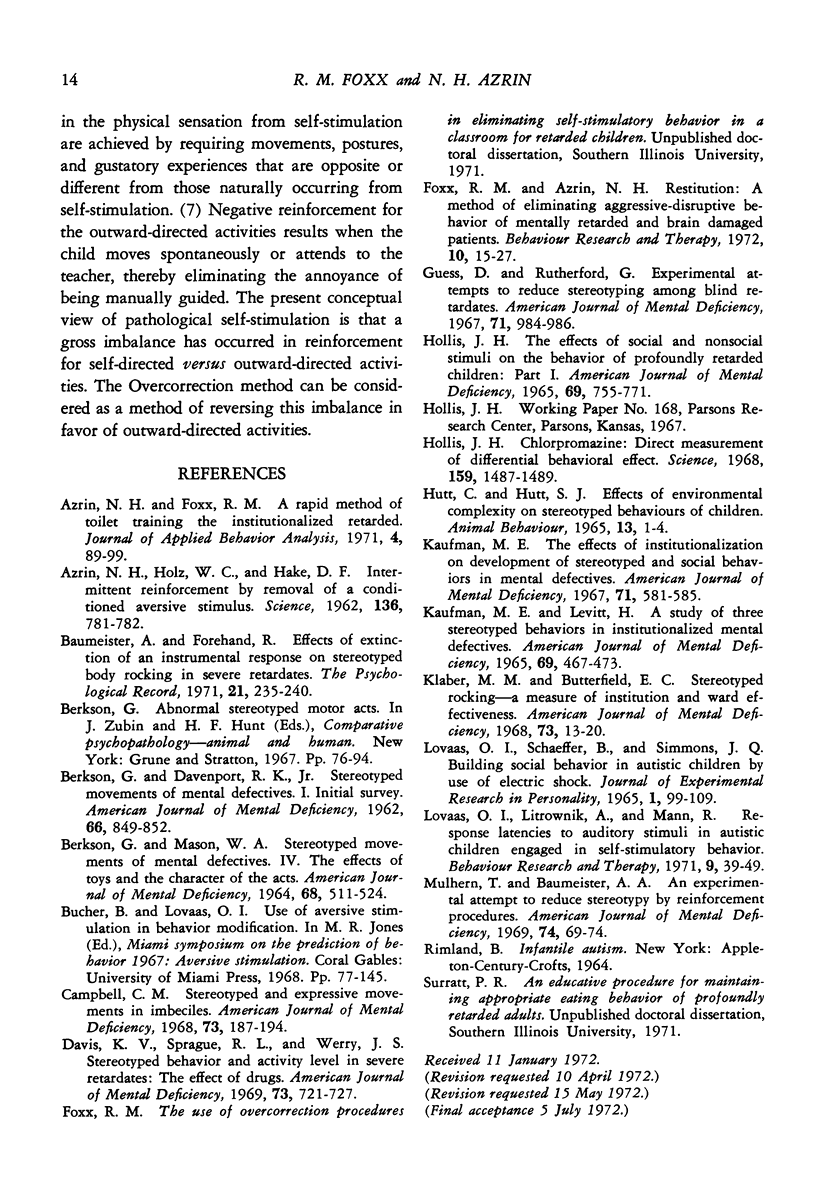
Selected References
These references are in PubMed. This may not be the complete list of references from this article.
- AZRIN N. H., HOLZ W. C., HAKE D. Intermittent reinforcement by removal of a conditioned aversive stimulus. Science. 1962 Jun 1;136(3518):781–782. doi: 10.1126/science.136.3518.781. [DOI] [PubMed] [Google Scholar]
- Azrin N. H., Foxx R. M. A rapid method of toilet training the institutionalized retarded. J Appl Behav Anal. 1971 Summer;4(2):89–99. doi: 10.1901/jaba.1971.4-89. [DOI] [PMC free article] [PubMed] [Google Scholar]
- BERKSON G., DAVENPORT R. K., Jr Stereotyped movements of mental defectives. I. Initial survey. Am J Ment Defic. 1962 May;66:849–852. [PubMed] [Google Scholar]
- BERKSON G., MASON W. A. STEREOTYPED MOVEMENTS OF MENTAL DEFECTIVES. IV. THE EFFECTS OF TOYS AND THE CHARACTER OF THE ACTS. Am J Ment Defic. 1964 Jan;68:511–524. [PubMed] [Google Scholar]
- Campbell C. M. Stereotyped and expressive movements in imbeciles. Am J Ment Defic. 1968 Sep;73(2):187–194. [PubMed] [Google Scholar]
- Davis K. V., Sprague R. L., Werry J. S. Stereotyped behavior and activity level in severe retardates: the effect of drugs. Am J Ment Defic. 1969 Mar;73(5):721–727. [PubMed] [Google Scholar]
- Foxx R. M., Azrin N. H. Restitution: a method of eliminating aggressive-disruptive behavior of retarded and brain damaged patients. Behav Res Ther. 1972 Feb;10(1):15–27. doi: 10.1016/0005-7967(72)90003-4. [DOI] [PubMed] [Google Scholar]
- Guess D., Rutherford G. Experimental attempts to reduce stereotyping among blind retardates. Am J Ment Defic. 1967 May;71(6):984–986. [PubMed] [Google Scholar]
- HOLLIS J. H. THE EFFECTS OF SOCIAL AND NONSOCIAL STIMULI ON THE BEHAVIOR OF PROFOUNDLY RETARDED CHILDREN. I. Am J Ment Defic. 1965 May;69:755–771. [PubMed] [Google Scholar]
- Hollis J. H. Chlorpromazine: direct measurement of differential behavioral effect. Science. 1968 Mar 29;159(3822):1487–1489. doi: 10.1126/science.159.3822.1487. [DOI] [PubMed] [Google Scholar]
- KAUFMAN M. E., LEVITT H. A STUDY OF THREE STEREOTYPED BEHAVIORS IN INSTITUTIONALIZED MENTAL DEFECTIVES. Am J Ment Defic. 1965 Jan;69:467–473. [PubMed] [Google Scholar]
- Kaufman M. E. The effects of institutionalization on development of stereotyped and social behaviors in mental defectives. Am J Ment Defic. 1967 Jan;71(4):581–585. [PubMed] [Google Scholar]
- Klaber M. M., Butterfield E. C. Stereotyped rocking--a measure of institution and ward effectiveness. Am J Ment Defic. 1968 Jul;73(1):13–20. [PubMed] [Google Scholar]
- Lovaas O. I., Litrownik A., Mann R. Response latencies to auditory stimuli in autistic children engaged in self-stimulatory behavior. Behav Res Ther. 1971 Feb;9(1):39–49. doi: 10.1016/0005-7967(71)90035-0. [DOI] [PubMed] [Google Scholar]
- Mulhern T., Baumeister A. A. An experimental attempt to reduce stereotypy by reinforcement procedures. Am J Ment Defic. 1969 Jul;74(1):69–74. [PubMed] [Google Scholar]


